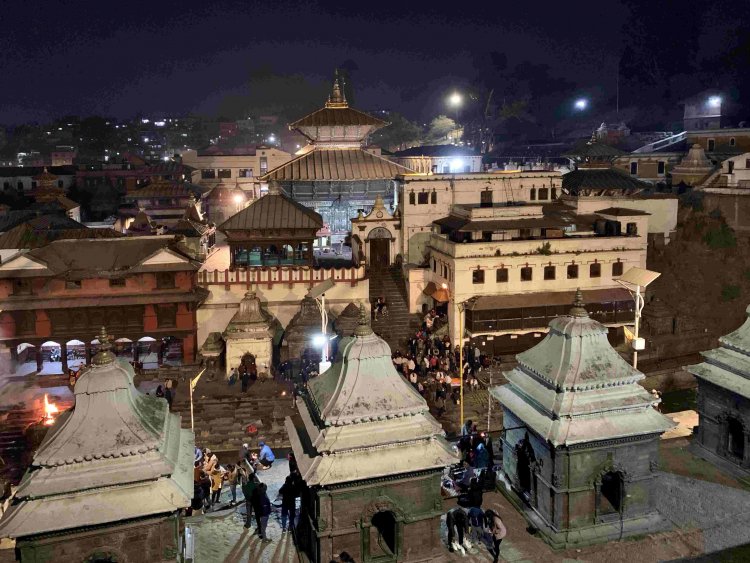The History of Pashupati Temple: Tracing the Evolution of a Sacred Hindu Shrine
Explore the rich history and significance of the Pashupati Temple in Nepal, one of the oldest and most revered Hindu shrines in the world. Discover its cultural heritage, evolution, and ongoing preservation efforts.

The Pashupati Temple is one of the oldest and most revered Hindu shrines in the world. Located in the city of Kathmandu, Nepal, the temple complex is dedicated to Lord Shiva, one of the three primary deities of Hinduism. The temple's history spans thousands of years, and its evolution provides a fascinating glimpse into the development of Hinduism in the Indian subcontinent.
The origins of Pashupati Temple can be traced back to the ancient Kirat dynasty that ruled over Nepal before the arrival of Hinduism. According to legend, a cow herder named Surya found a lingam, a symbol of Lord Shiva, while tending his cattle in the forests of Kathmandu. The lingam was located at the site where the Pashupati Temple now stands, and Surya built a small shrine around it. This shrine became a popular place of worship among the locals, and over time, it evolved into the grand temple complex that we see today.
The first historical reference to Pashupati Temple comes from a 5th-century Sanskrit inscription found in the nearby village of Changu Narayan. The inscription mentions a king named Manadeva, who is said to have built a stone temple dedicated to Lord Shiva in Kathmandu. While it is unclear whether this temple was the same as the Pashupati Temple or not, it does indicate the presence of a significant Hindu temple in the region at that time.
Over the centuries, various rulers of Nepal have contributed to the construction and maintenance of the Pashupati Temple. The Licchavi dynasty, which ruled Nepal from the 4th to the 9th century, is credited with building many of the temple's early structures, including the main sanctum and the mandapas (pillared halls). The Malla dynasty, which followed the Licchavis, further embellished the temple complex with new buildings, sculptures, and ornate carvings.
One of the most significant contributions to the Pashupati Temple came from King Bhupatindra Malla, who ruled Nepal in the 18th century. Bhupatindra Malla is credited with building the gold-plated roof that covers the main sanctum of the temple, as well as several other buildings and shrines within the complex. He also commissioned the construction of the Bagmati River ghats (steps) that provide access to the temple from the river.
In the early 20th century, the Pashupati Temple faced significant threats from neglect and urbanization. Many of the temple's buildings were in a state of disrepair, and the surrounding areas were being encroached upon by the rapidly expanding city of Kathmandu. In response, a group of concerned citizens formed the Pashupati Area Development Trust in 1964 to preserve and restore the temple complex. The Trust has since undertaken numerous restoration projects and implemented measures to protect the temple from further damage.
Today, the Pashupati Temple is a UNESCO World Heritage Site and one of the most important pilgrimage sites for Hindus around the world. The temple complex covers an area of around 264 hectares and includes over 500 shrines and monuments, including the main Pashupatinath temple, the Boudhanath Stupa, and the Guhyeshwari Temple. The temple attracts millions of visitors each year, who come to offer prayers and seek blessings from Lord Shiva.
In conclusion, the history of Pashupati Temple is a testament to the enduring power of Hinduism and its ability to adapt and evolve over time. From its humble beginnings as a small shrine in the forests of Kathmandu to its current status as a world-renowned pilgrimage site, the temple has played a central role in the spiritual and cultural life of Nepal and the wider Hindu world. Its evolution reflects the changing political and social dynamics of the region, as well as the artistic and architectural styles of different eras.
The Pashupati Temple complex is not only a place of worship but also a cultural and historical treasure. Its buildings and monuments showcase the unique artistic traditions of Nepal, including the intricate wood and stone carvings that adorn the temple's pillars and facades. The temple's architecture is also notable for its blend of Hindu and Buddhist styles, reflecting the cultural syncretism that has characterized the Kathmandu Valley for centuries.
While the Pashupati Temple has faced numerous challenges over the centuries, from neglect and natural disasters to political upheaval and urbanization, it has continued to endure as a symbol of faith and devotion. Its restoration and preservation have been made possible by the efforts of dedicated individuals and organizations who recognize the temple's significance and value.
As Nepal continues to develop and modernize, the Pashupati Temple complex faces new challenges, including the need for sustainable tourism practices and the preservation of its cultural heritage in the face of rapid urbanization. However, with the ongoing efforts of the Pashupati Area Development Trust and other stakeholders, the temple is sure to remain a beloved and revered destination for generations to come.
What's Your Reaction?




































































































